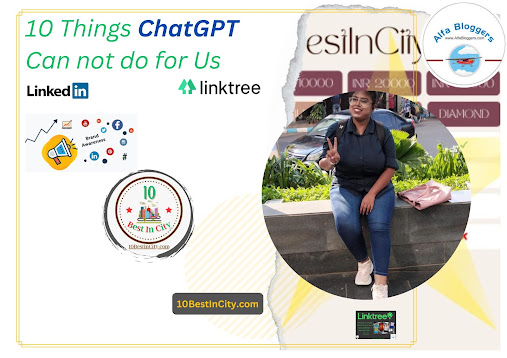The Female Freelancer's Guide to Success: How to Make a Living Doing What You Love
In recent years, the world of work has witnessed a significant shift towards freelancing and remote work, opening up countless opportunities for individuals to pursue their passions while maintaining a flexible lifestyle. Women, in particular, have embraced the freelance economy as a way to juggle career aspirations, family responsibilities, and personal growth. If you're a female freelancer or aspiring to become one, this guide is tailored to help you navigate the path to success while doing what you love.
1. Define Your Niche and Hone Your Skills
The first step in building a successful freelancing career is to identify your strengths and passions. Determine what services or products you can offer based on your skills and expertise. Whether it's content writing, graphic design, social media management, web development, or any other field, focusing on a niche will help you stand out in a competitive market. Continuously invest in improving your skills through online courses, workshops, and staying updated with industry trends.
2. Build an Impressive Online Presence
In the digital age, an online presence is crucial for attracting clients and showcasing your work. Create a professional website or portfolio that highlights your best projects, testimonials, and contact information. Utilize social media platforms to share your insights, connect with potential clients, and network with other freelancers in your field. Consistency in posting and engaging with your audience will enhance your visibility and credibility.
3. Set Clear Goals and Boundaries
Freelancing offers flexibility, but it's essential to establish clear goals and boundaries to maintain a healthy work-life balance. Define your financial goals, such as how much you need to earn monthly, yearly, or per project. Set boundaries regarding working hours, response times, and availability. Communicate these boundaries to your clients from the outset to manage expectations and avoid burnout.
4. Master the Art of Self-Promotion
Promoting yourself and your services is a vital aspect of freelancing success. Craft an elevator pitch that concisely explains who you are, what you do, and the value you bring to clients. Leverage content marketing by creating blog posts, videos, or social media content that demonstrates your expertise and provides value to your target audience. Engage in online communities, forums, and networking events to expand your reach and connect with potential clients.
5. Develop Strong Client Relationships
Building and maintaining healthy client relationships is key to a thriving freelance career. Communication is paramount—be responsive, transparent, and open to feedback. Listen to your clients' needs and tailor your solutions accordingly. Deliver high-quality work on time, and strive to exceed expectations whenever possible. Happy clients are more likely to refer you to others and provide you with repeat business.
6. Pricing Your Services Strategically
Pricing your services can be challenging, but it's crucial to value your work appropriately. Research industry standards and consider factors such as your experience, the complexity of the project, and the value you provide to the client. Avoid undervaluing yourself to secure clients, as this can lead to burnout and financial dissatisfaction in the long run. Be confident in your pricing and willing to negotiate when necessary.
7. Diversify Your Income Streams
Relying solely on one source of income can be risky. Explore opportunities to diversify your income streams, such as offering additional services, creating passive income through digital products, or teaching online courses. Diversification not only enhances your financial stability but also allows you to showcase your skills in different ways.
8. Stay Adaptable and Embrace Continuous Learning
The freelance landscape is constantly evolving, and staying adaptable is crucial for long-term success. Embrace change, be open to learning new skills, and keep up with industry trends. As technology advances and markets shift, those who are willing to adapt will continue to thrive in their freelancing endeavors.
Being a successful female freelancer involves a combination of honing your skills, building a strong online presence, setting clear goals, nurturing client relationships, strategic pricing, diversifying income streams, and embracing adaptability. By following this guide and persistently working towards your goals, you can make a living doing what you love while enjoying the freedom and flexibility that freelancing offers. Your journey as a female freelancer is an exciting adventure that empowers you to define your own success on your terms.
Aero-Tech
{Aviation + Technology}
1. AsiaticAir
(www.AsiaticAir.in)
Or
AeroSoft
(www.AeroSoft.in )
2.Ed-Tech
{Education + Technology}
(www.BestInternationalEducation.com)
3. Fin-Tech
{ Finance + Technology }
(www.Fintech-Start-Up.com)
4. Job-Tech
www.Flying-Crews.com
5. Travel-Tech
(www.AlfaTravelBlog.com)
6. Alfa-Blog
www.AlfaBloggers.com
7. Fem+Tech:
Female+Technology
http://www.portrait-business-woman.com/
Anjali Tomar
[ Project Director ]
10BestInCity.com
anjalitomar.aircrews@gmail.com
anjalitomar@10bestincity.com
www.10BestInCity.com
Linktree: https://linktr.ee/anjali10bestincity
LinkedIn: https://www.linkedin.com/in/anjali-tomar01/
Facebook: https://shorturl.at/hsx29
Instagram: https://www.instagram.com/10bestincity/
#FreelancerLife, #WomenInBusiness, #FreelanceSuccess, #WomenEmpowerment, #CareerGoals, #WorkLifeBalance, #FemaleEntrepreneur, #SelfEmployed, #FreelanceTips, #PassionProject, #DigitalNomad, #WomenInTech, #CreativeHustle, #BossBabe, #SideHustle, #FreelanceJourney, #RemoteWork, #BusinessMinded, #GoalGetter, #WomenAtWork, #EmpowerHer





.jpeg)






.jpg)






.jpeg)


.jpeg)

